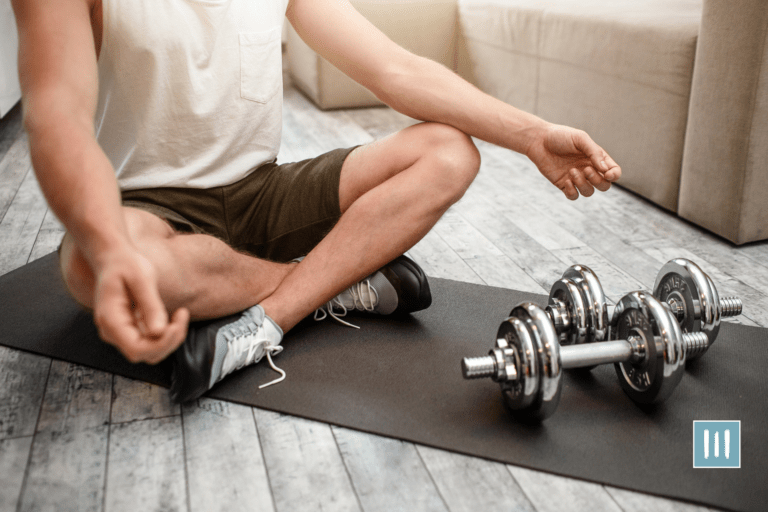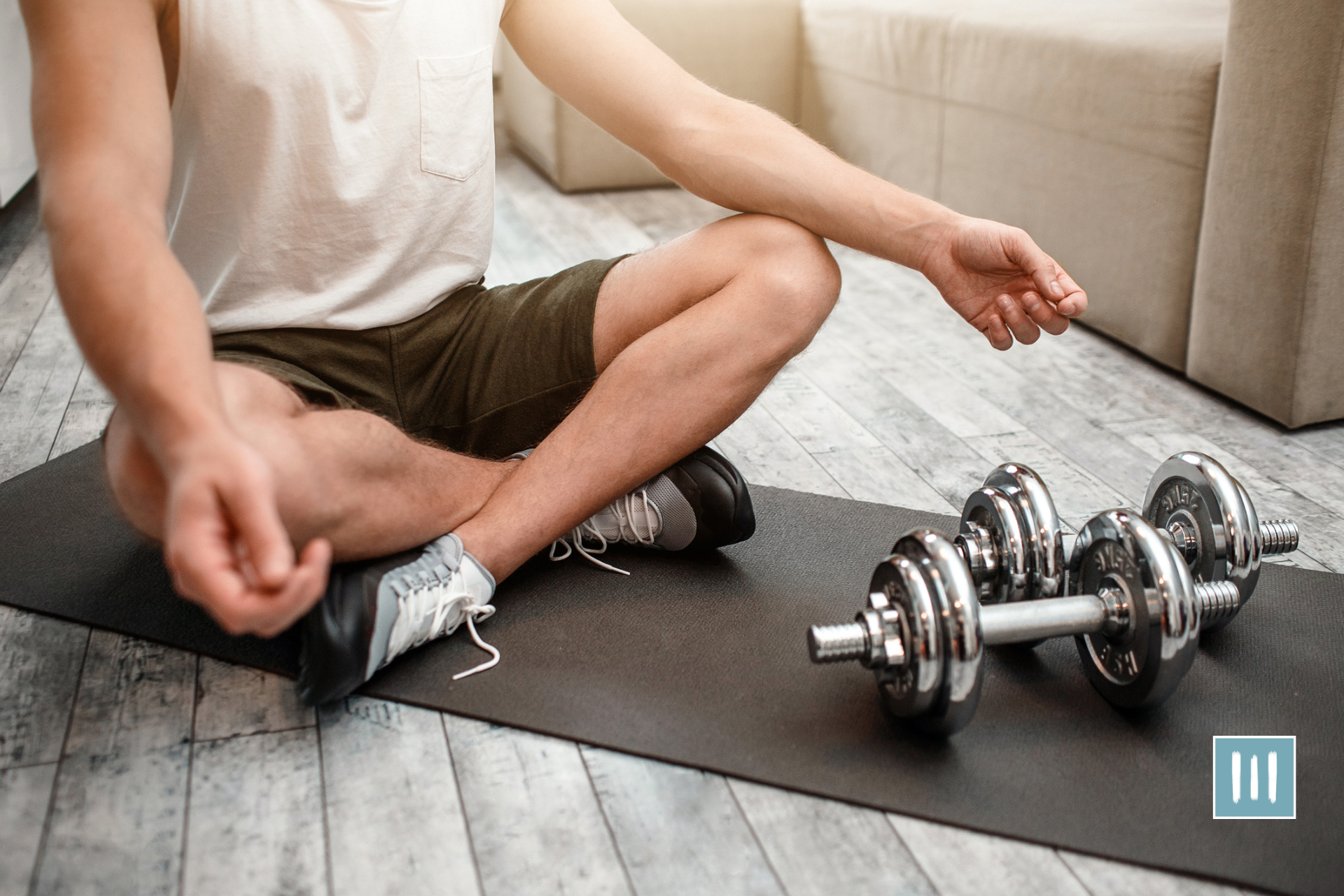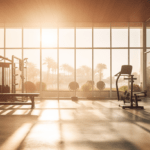Are you looking for effective ways to stay fit and active from the comfort of your own home? Well, look no further!
In this article, we will introduce you to various bodyweight home workout plans that will help you achieve your fitness goals. Whether you’re a beginner or an advanced fitness enthusiast, these workout plans are designed to challenge and push you toward mastery. According to reports, “21.2% of American men engaged in daily sports, exercise, and recreation versus 19.1% of women.”
First up, we have full-body circuit training. This workout plan is perfect for those who want to work their entire body in one go. With a combination of exercises that target different muscle groups, you’ll be able to build strength, improve cardiovascular endurance, and burn calories all at once.
From push-ups and squats to mountain climbers and burpees, this circuit training routine will leave you feeling both accomplished and energized. So get ready to sweat, challenge yourself, and take your fitness to the next level with these effective bodyweight home workout plans.
Full Body Circuit Training
Now that you’ve got the hang of bodyweight exercises, it’s time to take it up a notch with full-body circuit training. This type of workout is perfect for those who want to challenge their entire body and maximize their results.
With full-body circuit training, you’ll move quickly from one exercise to the next, targeting different muscle groups and keeping your heart rate up. It’s a fast-paced and efficient way to burn calories, build strength, and improve your overall fitness.
To get started with full-body circuit training, create a workout plan that includes a variety of exercises for each major muscle group. This could include squats, push-ups, lunges, planks, and burpees, to name a few. The key is choosing exercises that work for multiple muscle groups at once to get the most out of each movement.
Once you select your exercises, create a circuit by performing each exercise for a set amount of time or number of repetitions, then moving on to the next exercise without resting. Repeat the circuit for a designated number of rounds to increase the intensity and challenge as you progress.
Full-body circuit training is an excellent way to push yourself and take your bodyweight workouts to the next level. By incorporating various exercises and keeping the pace up, you’ll burn calories, build strength, and improve your cardiovascular fitness.
So grab your workout mat, put on some motivating music, and prepare to challenge your body and achieve mastery in your home workouts. You’ve got this!
Upper Body Strength Training
You’ll want to focus on exercises targeting your chest, shoulders, and arms to strengthen your upper body. These muscle groups are key for performing everyday activities, such as lifting, carrying, and pushing. Incorporating upper body strength training into your workout routine can improve your overall strength, posture, and appearance.
One effective exercise for targeting your chest is the push-up. This classic bodyweight exercise engages your chest, shoulders, and triceps while also working your core muscles. To perform a push-up, start in a plank position with your hands slightly wider than shoulder-width apart. Lower your body down by bending your elbows and keeping your back straight. Push yourself back up to the starting position and repeat for a desired number of repetitions.
In addition to push-ups, many other exercises can help you strengthen your upper body. To give you an idea, here’s a table outlining a few upper body exercises and the muscle groups they target:
| Exercise | Muscles Targeted |
|---|---|
| Push-up | Chest, shoulders, triceps, core |
| Dips | Chest, shoulders, triceps |
| Plank | Core, shoulders, arms |
| Shoulder Press | Shoulders, triceps |
| Bicep Curls | Biceps, forearms |
Incorporating these exercises into your workout routine will help you develop a strong, well-defined upper body. Start with lighter weights or modifications if you’re new to strength training, and gradually increase the intensity as you progress. With consistent effort and dedication, you’ll be on your way to mastering your upper body strength. Keep pushing yourself, and enjoy the journey to a stronger you!
Lower Body and Core Workout
During a lower body and core workout, engaging in exercises like squats and planks can help strengthen and tone muscles. Did you know that a plank exercise can burn approximately 2-5 calories per minute? That’s just one of the benefits you can gain from incorporating lower body and core exercises into your workout routine.
Here are three key exercises that can help you achieve mastery in this area:
- Squats: This classic exercise targets your quadriceps, hamstrings, and glutes, making it a great choice for building lower body strength. To perform a squat, stand with your feet shoulder-width apart, lower your body by bending your knees and pushing your hips back, and then return to the starting position. As you become more advanced, you can try variations like jump squats or pistol squats to challenge yourself even further.
- Lunges: Lunges are another fantastic exercise for targeting your lower body. They work your quadriceps, hamstrings, glutes, and calves, helping to improve your balance and stability. To perform a lunge, start by standing with your feet hip-width apart, take a step forward with one foot, and lower your body until both knees are bent at a 90-degree angle. Repeat on the other side to complete one rep. You can increase the difficulty of this exercise by holding dumbbells or adding a jump at the end of each lunge.
- Planks: Planks are a fantastic core exercise that also engages your glutes, shoulders, and back muscles. To perform a plank, start by getting into a push-up position, but instead of resting on your hands, lower down onto your forearms. Keep your body in a straight line from head to toe, engaging your core muscles and holding the position for as long as you can. As you progress, you can challenge yourself by adding variations like side planks or planks with leg lifts.
Incorporating these exercises into your lower body and core workout routine will not only help you build strength and tone your muscles but also improve your overall fitness and stability.
High-Intensity Interval Training (HIIT)
Achieve your fitness goals with High-Intensity Interval Training (HIIT), the perfect way to maximize your workout quickly.
HIIT involves alternating periods of intense exercise with short recovery periods, pushing your body to its limits and boosting your metabolism. This type of training not only burns calories during the workout but also continues to burn calories for hours afterward, helping you achieve your weight loss goals faster.
With HIIT, you can take your bodyweight home workout to the next level. Incorporating exercises like burpees, mountain climbers, and squat jumps, HIIT workouts engage multiple muscle groups, providing a full-body workout that targets both your lower body and core.
By challenging your muscles and cardiovascular system, HIIT improves your endurance, strength, and overall fitness level.
To get started with HIIT, choose 4-5 exercises and perform each exercise at maximum effort for 20-30 seconds, followed by a 10-15 second rest period. Repeat this circuit 3-4 times, and you’ll be amazed at the results.
With consistency and dedication, you’ll master HIIT and see incredible improvements in your fitness level.
So get ready to sweat, push yourself to new limits, and achieve your fitness goals with HIIT!
Stretching and Recovery Routine
Taking some time to stretch and recover after an intense workout can feel incredibly soothing and rejuvenating. It’s important to prioritize this step in your fitness routine to prevent injury and promote muscle recovery.
Here are five key elements to include in your stretching and recovery routine:
- Dynamic stretching: Start with some dynamic stretches like leg swings, arm circles, and torso twists. These movements increase blood flow to your muscles and prepare them for the workout ahead.
- Static stretching: After your workout, focus on static stretches to improve flexibility and reduce muscle soreness. Hold each stretch for 20-30 seconds, targeting major muscle groups like your hamstrings, quadriceps, and shoulders.
- Foam rolling: Incorporate foam rolling into your routine to release muscle tension and knots. Roll over different body areas, applying gentle pressure to alleviate any tightness or discomfort.
- Active recovery: Engage in low-intensity activities like walking or cycling on your rest days. This helps increase blood flow to your muscles, promoting faster recovery and reducing soreness.
- Hydration and nutrition: Don’t forget the importance of proper hydration through Minimal vacuum-insulated sports bottle and nutrition in your recovery routine. Drink plenty of water to replenish fluids lost during exercise and consume a balanced meal or snack with protein and carbohydrates to support muscle repair.
By incorporating these elements into your stretching and recovery routine, you’ll enhance your overall performance and reduce the risk of injury. Mastering the art of recovery is just as crucial as mastering your workout routine. So, take the time to prioritize your body’s needs and enjoy the benefits of a well-rounded fitness plan.
Frequently Asked Questions
How long should I rest between exercises in a full-body circuit training workout?
Resting between exercises in a full-body circuit training workout? Forget rest! You’re a machine! Push yourself to the limit and take mini breaks only if you absolutely have to. Embrace the challenge and conquer it!
Can I modify upper body strength training exercises if I don’t have access to weights?
Yes, you can modify upper body strength training exercises without weights. To target different muscle groups, incorporate bodyweight exercises like push-ups, tricep dips, and plank variations. Focus on form, progression, and challenging yourself to achieve maximum results. Keep pushing!
Before starting a lower body and core workout routine, are there any precautions I should take?
Before starting a lower body and core workout routine, it’s crucial to prioritize safety. Take precautions like warming up, listening to your body, and using proper form to minimize the risk of injury.
How many times a week should I do high-intensity interval training (HIIT) for optimal results?
For optimal results with high-intensity interval training (HIIT), aim for 3-4 sessions per week. This will allow your body to recover and maximize your progress. Consistency is key to mastering your fitness goals!
What are the best stretches to include in a post-workout stretching and recovery routine?
To optimize your post-workout recovery, focus on stretches that target the major muscle groups you worked. Include moves like the standing quad stretch, seated forward fold, and child’s pose. Embrace these stretches to enhance your mastery of recovery.

















